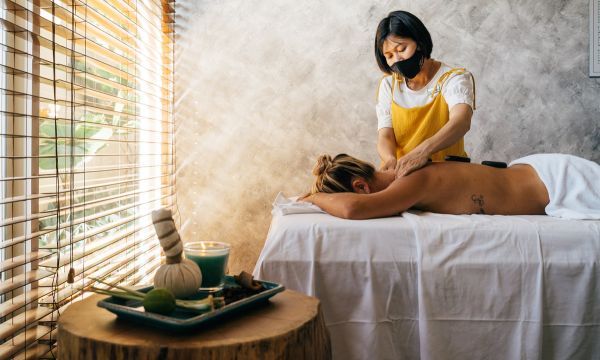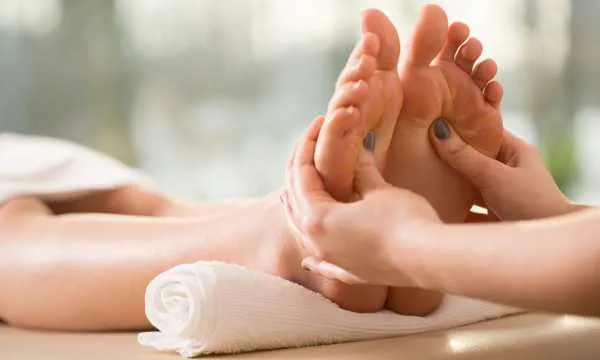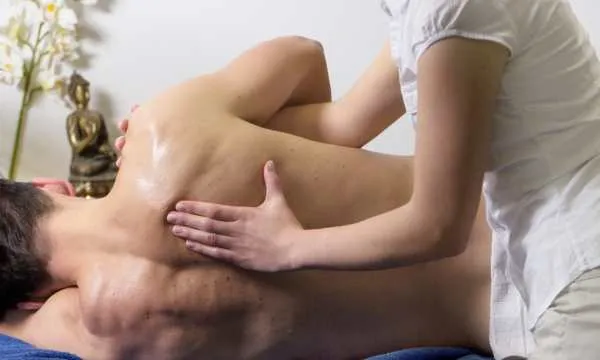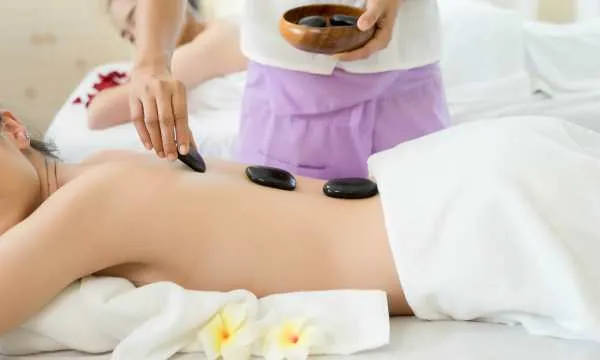In recent years, massage therapy has gained recognition as a valuable form of treatment for a variety of physical and mental health conditions.
Ad
As a result, there has been a growing interest in exploring new techniques and approaches to massage therapy. This has led to the development of innovative techniques that are designed to provide more effective and targeted therapeutic benefits.
One of the most exciting developments in massage therapy is the exploration of new approaches to traditional techniques. For example, therapists are now incorporating elements of Eastern medicine, such as acupressure and shiatsu, into their massage practices.
Ad
These techniques are based on the idea that the body has energy pathways that, when blocked, can cause physical and emotional imbalances. By applying pressure to specific points along these pathways, therapists can help to release tension and promote healing.
Another area of innovation in massage therapy is the use of technology to enhance the therapeutic benefits of massage. For example, some therapists are now using tools such as vibrating massage balls and electric massagers to provide deeper, more targeted pressure to specific areas of the body.
Ad
These tools can be particularly effective for treating chronic pain and muscle tension, as they can provide a level of pressure that is difficult to achieve with traditional massage techniques alone.
Historical Evolution of Massage Techniques
Massage is an ancient practice that has been used for healing and relaxation for thousands of years. The techniques used in massage have evolved over time, with new approaches and methods being developed to meet the changing needs of society.
One of the earliest forms of massage was developed in China over 5,000 years ago. This form of massage, known as Tui Na, involved the use of pressure and stretching to relieve pain and promote healing. It was later adopted by other Asian cultures, including Japan and Korea, and is still widely practiced today.
In ancient Greece, massage was used as a form of physical therapy for athletes and soldiers. The Greek physician Hippocrates, who is often referred to as the father of modern medicine, wrote extensively about the benefits of massage for health and wellness.
During the Middle Ages, massage fell out of favor in Europe as the Catholic Church began to view it as a form of sensuality. However, it continued to be practiced in other parts of the world, including Asia and the Middle East.
In the 19th century, Swedish physician Per Henrik Ling developed a new form of massage known as Swedish massage. This technique involved the use of long strokes, kneading, and friction to promote relaxation and improve circulation. Swedish massage quickly became popular throughout Europe and the United States, and is still one of the most widely practiced forms of massage today.
In recent years, new approaches to massage have emerged, including deep tissue massage, myofascial release, and trigger point therapy. These techniques are designed to target specific areas of the body and provide targeted relief for pain and tension.
Overall, the historical evolution of massage techniques has been shaped by the changing needs of society and the development of new approaches to healing and wellness. Today, massage continues to be an important part of many people’s lives, providing relaxation, pain relief, and improved physical and mental health.

Techniques-for-therapeutic-massage – Source(Canva)
Advancements in Massage Tools and Equipment
Smart Technology Integration
In recent years, massage therapy has seen a surge in the integration of smart technology into massage tools and equipment. These advancements have allowed therapists to provide a more personalized and effective massage experience to their clients.
One example of smart technology integration is the use of massage chairs that come with built-in sensors and software. These sensors can detect the client’s body shape and posture, allowing the chair to adjust its settings accordingly. The software can also track the client’s progress and provide recommendations for future sessions.
Another example is the use of massage guns that come with mobile apps. These apps allow users to customize their massage experience by adjusting the intensity, speed, and frequency of the massage. The apps can also provide guidance on which muscle groups to target and how to use the massage gun effectively.
Ergonomic Enhancements
Massage therapists often experience physical strain and fatigue from performing massages for extended periods. To address this issue, manufacturers have started to incorporate ergonomic enhancements into massage tools and equipment.
One example is the use of massage tables with adjustable height settings. This allows the therapist to adjust the table to a comfortable height, reducing the strain on their back and shoulders. Another example is the use of massage chairs with adjustable armrests, allowing the therapist to position their arms comfortably while performing the massage.
Additionally, many massage tools and equipment now come with ergonomic handles and grips. This allows the therapist to hold the tool comfortably for extended periods, reducing the risk of hand and wrist injuries.
Overall, these advancements in massage tools and equipment have allowed therapists to provide a more effective and comfortable massage experience to their clients while reducing the risk of physical strain and injury.
Innovative Massage Techniques
Fusion Massage Modalities
Fusion massage modalities combine various massage techniques to create a unique and personalized massage experience. These techniques may include Swedish massage, deep tissue massage, Thai massage, reflexology, and aromatherapy.
By blending different techniques, fusion massage modalities can provide a more comprehensive approach to massage therapy. This approach allows therapists to address multiple areas of the body and provide a more complete relaxation experience for clients.
Targeted Pressure Wave Therapy
Targeted pressure wave therapy is a non-invasive massage technique that utilizes high-frequency vibrations to target specific areas of the body. This therapy is particularly effective for treating chronic pain, muscle tension, and inflammation.
This technique involves using a handheld device that emits high-frequency vibrations to stimulate the muscles and tissues. This stimulation helps to increase blood flow and oxygenation to the affected area, which can help to reduce pain and promote healing.
Overall, innovative massage techniques such as fusion massage modalities and targeted pressure wave therapy can provide clients with a more personalized and effective massage experience. These techniques can help to address specific areas of the body and provide relief from chronic pain and tension.
Therapeutic Benefits and Evidence
Massage therapy has been used for centuries to promote relaxation, reduce stress, and alleviate pain. In recent years, innovative techniques have been developed to enhance its therapeutic benefits. This section explores the evidence behind two of the most common benefits of massage therapy: stress and pain reduction, and improved circulation and healing.
Stress and Pain Reduction
Massage therapy is known for its ability to reduce stress and promote relaxation. Several studies have shown that regular massage sessions can significantly reduce levels of stress hormones such as cortisol and adrenaline. This reduction in stress hormones can lead to a decrease in anxiety, depression, and other mood disorders.
In addition to reducing stress, massage therapy can also help alleviate pain. Massage techniques such as deep tissue massage and myofascial release can help relieve chronic pain caused by conditions such as fibromyalgia, arthritis, and back pain. These techniques work by releasing tension in the muscles and soft tissues, which can help reduce inflammation and pain.
Improved Circulation and Healing
Massage therapy can also improve circulation and promote healing. Massage techniques such as Swedish massage and lymphatic drainage massage can help increase blood flow and lymphatic circulation, which can help improve the delivery of oxygen and nutrients to the body’s tissues. This increased circulation can also help remove waste products and toxins from the body, which can help promote healing.
Several studies have also shown that massage therapy can help improve the healing process after injuries or surgeries. Massage techniques such as scar tissue massage and trigger point therapy can help break up scar tissue and adhesions, which can help improve range of motion and reduce pain.
Overall, massage therapy offers a range of therapeutic benefits that can help improve both physical and mental health. With the development of innovative techniques, massage therapy continues to evolve as a powerful tool for promoting wellness and healing.


